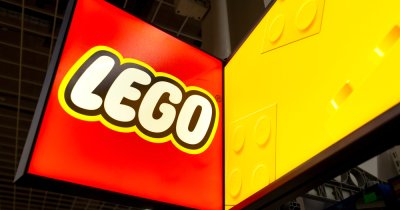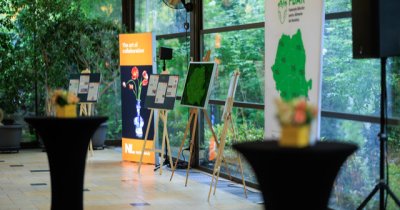We recently wrote about CarbonScape in this article, when we briefly explained the process that the company uses to create sustainable graphite for battery production. Called thermo-catalytic graphitization, this helps create sustainable batteries, and it works by heating forestry byproducts, such as woodchips. The resulted charcoal-like material can be purified and turned into graphite for high-performance batteries.
As we wanted to find out more about this solution, we reached out to CarbonScape and we had the company's experts detail how they managed to develop the chip-made graphite alternative.
Graphite, a key material when manufacturing batteries, is currently mined from natural graphite or obtained from petroleum products, known as synthetic graphite. CarbonScape's graphite is more sustainable than either alternative, company officials say.
Naturally mined graphite can also have a big impact on local communities and the ecosystems, as its extraction and processing have a carbon footprint of 15 tons per ton of manufactured material.
Using woodchips and other forestry byproducts allow us to capture and store the emissions that would have otherwise been released when tree matter decomposes, CarbonScape explains.
From water treatment, to sustainable batteries
"At CarbonScape, our vision is for a world where our renewable carbon products replace fossil carbons, for a greener future for all. The company was originally born in 2006 – based around the idea of pioneering new, sustainable methods to convert waste biomass into carbon products, including biochar for soil remediation", company officials told Green Start-Up.

Activated carbon for water treatment was another focus of CarbonScape, but the team soon realized that there is another industry needing closer focus and that was battery manufacturing. Renewable energy and the electrification of the transport sector skyrocketed in recent years, which meant that our traditional ways to manufacture battery cells was no longer viable for the long term.
Thus, CarbonScape, a New Zealand-based company, focused all its resources on developing an alternative material that can help us produce batteries with a lower negative impact on the planet, while potentially lowering production costs.
"Drawing on 10 years of deep-tech carbon materials knowledge and an innovation culture, we pioneered our first biographite in 2015. This higher value bio-anode material goes a long way to solving the pressing issue of how to make lithium-ion batteries in a significantly greener, and more affordable way."
But how exactly does the company produce biographite? The brief explanation is that "we pyrolyze wood chips into charcoal, add a catalyst, and then catalytically graphitize it. CarbonScape fully recovers and recycles the catalyst afterwards. We then purify, densify and coat this ‘raw’ graphite to make battery-anode-quality graphite."
The company's patented technology is thus able to turn the amorphous carbon from biomass into a battery-grade graphite and the solution ensures constant flows of high-quality materials for battery manufacturing.
Biographite or synthetic graphite for future production
CarbonScape officials explain that the production of synthetic graphite for battery cells has a big negative footprint on the planet, as it is produced with feedstock coming from the oil industry and releases harmful emissions. Unfortunately, natural graphite isn't much better, either, as this implies mining the material from non-renewable carbon, which has its own impact on the ecosystems and local communities.
"The biggest gamechanger of all is that CarbonScape’s biographite can be competitively produced, locally, anywhere with a forestry industry – simply using woodchip by-product as feedstock. This innovative technology significantly alters the supply chain dynamics for graphite and will ease the monopoly stranglehold, as well as further reduce both the cost and climate impact of transportation", the representatives of the New Zealand-based company told Green Start-Up.
As China currently holds 90% of the world's graphite market, other regions, including Europe and the United States are looking at ways to create their own industries to produce the material more efficiently and at higher quality, to protect themselves from a global monopoly, company officials say.
"The graphite anode is the largest component by weight of a lithium-ion battery, constituting up to 50% of a lithium-ion battery (a typical EV contains about 70 kg). Hence the demand for this critical mineral faces a global supply deficit of 777,000 tons expected by 2030."
“By using less than 5% of the forestry industry’s annual by-products in Europe and North America, we know we can produce enough of it to meet half the total projected global demand for both EV and grid-scale batteries by 2030.”
While opening new mines to extract natural graphite in the EU or the US can take upwards of 7 years, a biographite facility can be permitted in less than a year and the material can be produced within hours, instead of weeks.

Additionally, experts at CarbonScape say that biographite's quality is good enough so that the material can act as a drop-in replacement for natural or synthetic graphite, not requiring any modifications in the battery manufacturing process.
Compared to the two other graphite-obtaining processes, biographite production has the lowest carbon footprint and can even be carbon-neutral, especially if using renewable power for processing.
Investments and future plans
In 2023, CarbonScape received the company's largest investment to date of 18 million USD from Swedish-Finnish company Stora Enso Oyj, one of the world's largest private forest operators to commercialize the production of biographite in Europe and the US. Company officials at the time said that the "new investment will support CarbonScape to scale the business and further develop plans for production facilities in Europe and the US."
Currently, the company is in the process of commercializing the production of biographite in these two markets with the help of Stora Enso Oyj and Amperex Technology, as it aims to make sustainable biographite the norm in the lithium-ion battery industry. As the material is highly-performant, has a low production cost and carbon footprint, as well as being very flexible with regards to the manufacturing location, this can be the next big step in the battery revolution.
"CarbonScape’s biographite will cut the carbon footprint of each EV battery by almost a third. Switching Europe to locally produced biographite by 2030 could reduce carbon emissions by 15 million tons of CO2. That’s the equivalent of taking a million combustion vehicles off European roads every year", company officials added.
 Mihai - Cristian Ioniță
Mihai - Cristian Ioniță












Any thoughts?